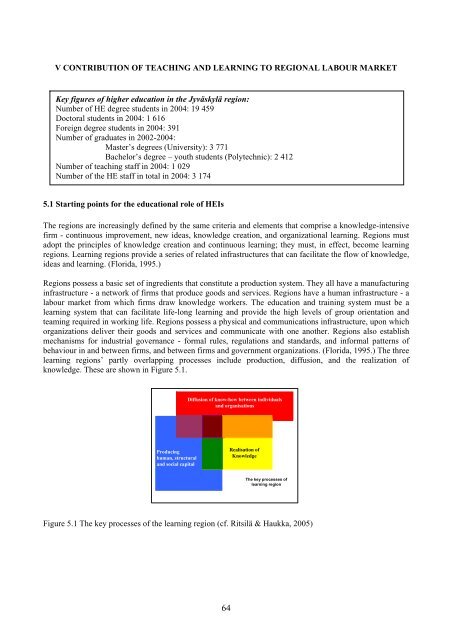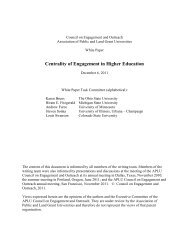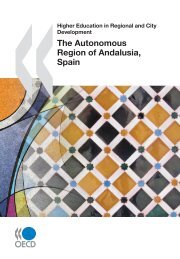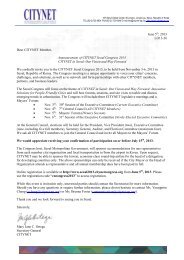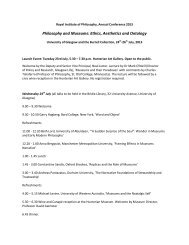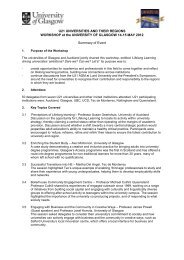Finland - Jyvaskyla Region - Final Self-Evaluation Report.pdf
Finland - Jyvaskyla Region - Final Self-Evaluation Report.pdf
Finland - Jyvaskyla Region - Final Self-Evaluation Report.pdf
You also want an ePaper? Increase the reach of your titles
YUMPU automatically turns print PDFs into web optimized ePapers that Google loves.
V CONTRIBUTION OF TEACHING AND LEARNING TO REGIONAL LABOUR MARKETKey figures of higher education in the Jyväskylä region:Number of HE degree students in 2004: 19 459Doctoral students in 2004: 1 616Foreign degree students in 2004: 391Number of graduates in 2002-2004:Master’s degrees (University): 3 771Bachelor’s degree – youth students (Polytechnic): 2 412Number of teaching staff in 2004: 1 029Number of the HE staff in total in 2004: 3 1745.1 Starting points for the educational role of HEIsThe regions are increasingly defined by the same criteria and elements that comprise a knowledge-intensivefirm - continuous improvement, new ideas, knowledge creation, and organizational learning. <strong>Region</strong>s mustadopt the principles of knowledge creation and continuous learning; they must, in effect, become learningregions. Learning regions provide a series of related infrastructures that can facilitate the flow of knowledge,ideas and learning. (Florida, 1995.)<strong>Region</strong>s possess a basic set of ingredients that constitute a production system. They all have a manufacturinginfrastructure - a network of firms that produce goods and services. <strong>Region</strong>s have a human infrastructure - alabour market from which firms draw knowledge workers. The education and training system must be alearning system that can facilitate life-long learning and provide the high levels of group orientation andteaming required in working life. <strong>Region</strong>s possess a physical and communications infrastructure, upon whichorganizations deliver their goods and services and communicate with one another. <strong>Region</strong>s also establishmechanisms for industrial governance - formal rules, regulations and standards, and informal patterns ofbehaviour in and between firms, and between firms and government organizations. (Florida, 1995.) The threelearning regions’ partly overlapping processes include production, diffusion, and the realization ofknowledge. These are shown in Figure 5.1.Diffusion of know-how between individualsand organisationsProducinghuman, structuraland social capitalRealisation ofKnowledgeThe key processes oflearning regionFigure 5.1 The key processes of the learning region (cf. Ritsilä & Haukka, 2005)64


